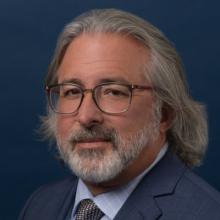January 15, 2024
Ten years ago, Charles Rutheiser helped launch the National Initiative on Mixed-Income Communities through a seed grant from the Annie E. Casey Foundation (AECF). As we reflect on ten years of progress, Charles offers a unique perspective through his role as a Senior Associate in the Center for Community and Economic Opportunity at the Annie E. Casey Foundation in Baltimore, Maryland.
We are deeply grateful for this long-term partnership, and Mark Joseph, NIMC Founding Director, enjoyed connecting with Charles for a “10th Anniversary Lookback” conversation. Below, Charles (CR) and Mark (MJ), provide a glimpse into the supportive relationship between NIMC and AECF and Charles’ advocacy and support for equitable, inclusive community building.
MJ: “You facilitated NIMC's founding ten years ago with a grant from the Annie E. Casey Foundation. What was compelling about the vision for the mixed-income center as you understood it back then?”
CR: “For more than a decade before the start of NIMC, mixed-income communities had been touted by many in the community change field as the answer to concentrated urban poverty. However, the basis for this notion was often more a matter of faith in an idea rather than fact based on evidence. One of the compelling aspects of the vision for NIMC was to serve as a clearinghouse for data, information, and analysis of the implementation and impacts, especially the human impacts, of mixed- income communities.”
MJ: “You've remained a consistent champion and supporter of NIMC's work. Thank you! How would you describe NIMC's value to the community change field?”
CR: “NIMC has emerged as the significant center of gravity in the community change field for information on the results and lessons arising from mixed-income community projects.”
MJ: “What has surprised you most about NIMC's journey over the last ten years?”
CR: “I’m not really surprised about what NIMC has been able to accomplish; I think the potential was there in the initial vision. I have been, and remain, impressed, however, about your ability to secure funding from other foundations, develop a very robust fee-for-service model, and work purposefully around equity and inclusion.”
MJ: “How has NIMC impacted your own thinking and work?”
CR: “NIMC’s work has given me a much greater appreciation for the promise, impacts, and limitations of mixed-income communities: that they are an answer, not the answer, to creating communities that enable all children, young people, and families to thrive.
MJ: “How would you describe the narrative arc of NIMC's first decade?”
CR: “In the formative phase, NIMC focused on collecting data and building the systems to make it accessible to the field. This soon evolved to a focus on lessons and making these lessons actionable through consulting engagements with a wide variety of mixed-income projects.”
MJ: What would make NIMC more effective in promoting urban equity and inclusion?”
CR: “Perhaps encouraging a reconsideration and expansion of geographic scope. Inequality in access to resources and across a broad range of life outcomes is not just limited to cities. Many rural regions struggle with high poverty and limited opportunity, and the biggest growth in poverty over the last several years has occurred in suburban areas.”
Reflecting on 10 Years of Partnership
Contemplating how far we’ve come and what we’ve learned along the way is an essential step toward building the vision of what is next for NIMC. We thank the Annie E. Casey Foundation for their early and transformative investment in helping to build communities where everyone can thrive.


